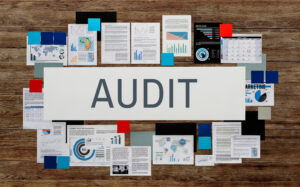Introduction:
The automotive industry is highly regulated, with quality management systems playing a crucial role in ensuring customer satisfaction and maintaining a competitive edge. The IATF 16949:2016 standard provides the framework for organizations to demonstrate their ability to consistently deliver high-quality products and services. As an internal auditor, understanding the requirements of this standard is essential to ensure that your organization maintains compliance and adheres to industry expectations.
The Importance of IATF 16949:2016 Internal Auditors
The IATF 16949:2016 standard is a quality management system (QMS) requirement specifically designed for the automotive industry. It builds upon the principles outlined in ISO 9001, providing additional requirements and guidelines tailored to the unique needs of the automotive sector.To maintain compliance with this standard, internal auditors play a vital role in ensuring that the organization's QMS is effective and efficient. This involves conducting regular audits to assess the implementation of processes, identifying areas for improvement, and implementing corrective actions as necessary.
Key Responsibilities of IATF 16949:2016 Internal Auditors
Internal auditors responsible for ensuring compliance with IATF 16949:2016 have several key responsibilities:
* Conducting regular audits to assess the implementation of processes and identify areas for improvement.
* Evaluating the effectiveness of the QMS in achieving its intended outcomes.
* Identifying and reporting nonconformities, as well as implementing corrective actions as necessary.
* Providing recommendations for improvements to management and other stakeholders.
Best Practices for Conducting IATF 16949:2016 Internal Audits
Conducting effective internal audits is crucial to maintaining compliance with IATF 16949:2016. Here are some best practices to consider:
* Develop a clear audit plan: Ensure that the audit plan is well-defined, focused on specific areas of concern, and aligned with the organization's QMS objectives.
* Conduct thorough risk assessments: Identify potential risks and evaluate their impact on the QMS.
* Gather relevant data and evidence: Collect sufficient data to support findings and make informed decisions
* Report findings accurately: Provide clear, concise, and actionable recommendations for improvement.
Continuous Improvement and Compliance with IATF 16949:2016
Maintaining compliance with IATF 16949:2016 requires a commitment to continuous improvement. This involves:
* Regularly reviewing and updating the QMS: Ensure that processes are aligned with the organization's objectives and remain effective over time.
* Conducting regular audits: Schedule regular internal audits to assess the implementation of processes and identify areas for improvement.
* Implementing corrective actions: Take prompt action to address nonconformities and prevent recurrence.
* Providing training and awareness: Ensure that all stakeholders are aware of their roles and responsibilities in maintaining compliance.
Conclusion
Maintaining compliance with IATF 16949:2016 is crucial for organizations seeking to demonstrate their ability to consistently deliver high-quality products and services. As an internal auditor, understanding the requirements of this standard is essential to ensure that your organization maintains compliance and adheres to industry expectations.



